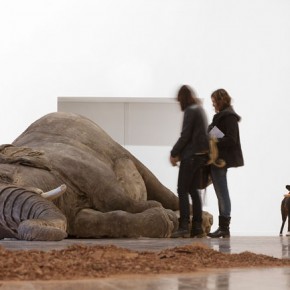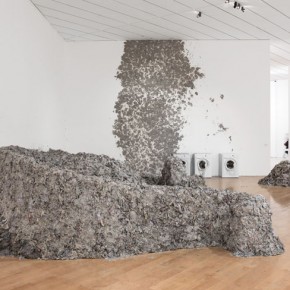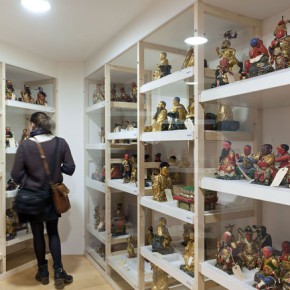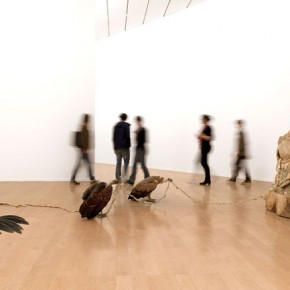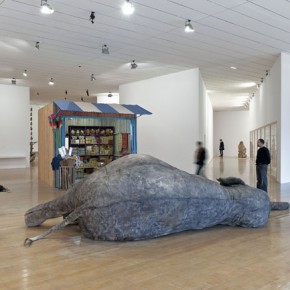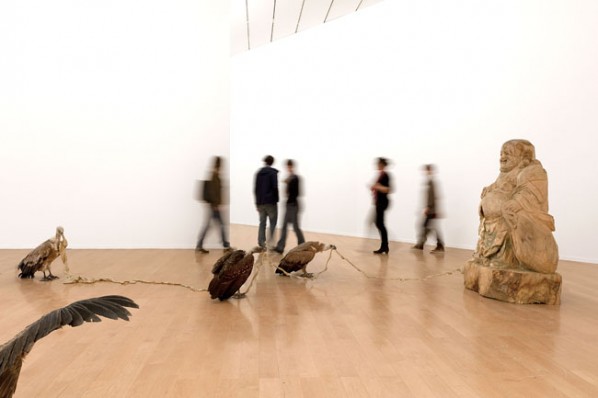
Inspired by a unique collection of statues from the Chinese province of Fujian (representing a pantheon of gods popular in China, discovered in the late nineteenth century by Johannes Jacobus Maria de Groot), preserved at the musée des Confluences, Huang Yongping has designed a new exhibition at Musée d'Art Contemporain Lyon, that is both autobiographical and self-fictional. Autobiographical because the artist comes from the Fujian Province and has always seen these statues in "situation" before discovering "ethnographical" and coloured replicas; self-fictional, because for the artist, this is the illustration of the permissiveness of cultural fields and their floating meanings (History? Ethnography? Art? Heritage? Replica? Exoticism? etc.). This piece demonstrates the mechanism of the construction and homogenization of cultural fields.
For the exhibition, Huang Yongping makes use of the 1000 ㎡ space of the second floor of the macLYON . The exhibition consists of a shift between biography, anthropology, recycling and creation – each oeuvre designates what could be referred to as a new “start”. Just as Reptiles, created and exhibited at Les Magiciens de la Terre Exhibition, which "recycled" books and oblivion, history and fiction, for critical purposes. A parallel could also be drawn to Mille bras de Guanyin [The Thousand Arms of Guanyin], a tribute to the “bottle-carrier”, that is both a Duchamp icon and the Buddhist goddess with a thousand arms: Guanyin. This sculpture was originally designed by the artist for a contemporary art project in Munster, Germany in 1997 but now old and damaged, has been dismantled. The artist however, has kept the partially destroyed arms that are shiny with age. The raised fist, symbolic of the labour force, a votive object, uniformization, globality, display?
We are here at the very heart of a very “modern” phenomenon: the “patrimonialisation of memories and consciences”. Such therefore, is the case with these Fujian statuettes that are for this exhibition part of his work, based on the artist’s decision, after being initially just a childhood memory for him, then an ethnographical object and finally a museum heritage characteristic of colonial cultural practices of a western society looking at the “Other”.
The ancient and the contemporary: a creation or an exhibition of previously seen relics? Ready-made and already-made? On the contrary, this is a new departure in a constantly evolving world, full of interconnections: a global, complex, powerful and poetic creation.
Amoy/Xiamen combines the old and current name for this port city, connected together and distinguished by a simple slash mark. Xiamen was formerly known as Amoy and witnessed some of the city's first European travellers. Amoy/Xiamen is therefore the association of yesterday and today, of the past and the present.Born in 1954 in Xiamen in the Fujian Province of China, Huang Yong Ping participated in the 1989 exhibition Les Magiciens de la Terre allowing him to become known in France. He moved to Paris, where he currently lives and works. He represented France at the 1999 Venice Biennial.
This exhibition is organized with the support of musée des Confluences and the Galerie kamel mennour.
About the exhibition
Duration: 15 February - 14 April 2013
Venue: Musée d'Art Contemporain Lyon
Courtesy of the artist and Musée d'Art Contemporain Lyon, for further information please visit www.mac-lyon.com.


